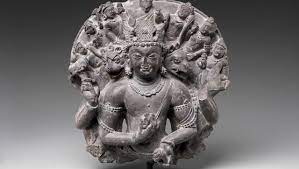Rajatarangini was written by Kalhan, a Kashmiri historian. The book contains account of the rich history of ancient Kashmir. It discusses the comprehensive account of the region’s socio-cultural, political, and dynastic history.

Table of Contents
What is inside the book Rajatarangini?
Rajatarangini, meaning “The River of Kings,” is a chronicle of the Kashmiri rulers, tracing their lineage and recounting significant events from ancient times to the author’s contemporary era. It serves as an essential historical document, offering insights into the socio-political landscape and cultural heritage of Kashmir.
Rajatarangini was written by
The Rajatarangini was written by the esteemed Kashmiri historian Kalhana in the 12th century CE. Kalhana, born into a scholarly family, dedicated his life to chronicling the history of Kashmir. His meticulous research and literary craftsmanship have immortalized him as one of the most revered historians in Indian literature. Through Rajatarangini, Kalhana crafted a literary masterpiece that stands as a testament to his dedication and passion for historical accuracy.
Key Themes and Contents
Rajatarangini is divided into eight books, each highlighting a specific era in Kashmir’s history. It covers various aspects, including the region’s political struggles, the rise and fall of dynasties, religious beliefs, social customs, and cultural achievements. The chronicle also sheds light on significant historical events, such as the rule of famous Kashmiri kings, conflicts with neighboring kingdoms, and the impact of Buddhism and Hinduism on Kashmiri society.
Historical Significance and Cultural Impact
Rajatarangini holds immense historical significance as one of the most extensive and reliable sources for understanding ancient Kashmir. Its meticulous historical accounts have been invaluable to scholars, researchers, and historians studying the region. The chronicle also played a crucial role in preserving and promoting Kashmiri culture, literature, and heritage.
Enduring Legacy
The impact of Rajatarangini extends far beyond its historical relevance. It has inspired subsequent generations of writers, scholars, and artists, shaping their understanding of Kashmir’s past and cultural identity. The chronicle continues to be a significant source of inspiration for literature, music, and visual arts in the region, further cementing its enduring legacy.
Who Translated Rajatarangini in Persian Language
Conclusion
Important Links